今日上海
城市交通的三维未来正在逐步实现 - 2025年07月27日
No longer science fiction, a three-dimensional future for urban transport is getting off the ground
Imagine a commute to work that isn't on a gridlocked street or on the subway. Imagine a future where you step into an unmanned taxi that rises a few hundred meters from the ground and whisks you to your office.
Sound fanciful? Think again. That future is close and getting closer, and Shanghai hosted an exhibition to prove the point.
The 2025 International Advanced Air Mobility Expo, which ended on July 26, was a showcase for nearly 300 companies developing breakthrough technologies for what is called the low-altitude economy – the latest frontier in civil aviation.
China Biz Buzz visited the expo, where flying taxis seemed the big focus for many developers of unmanned aerial vehicles as they demonstrated how urban transport will be revolutionized.
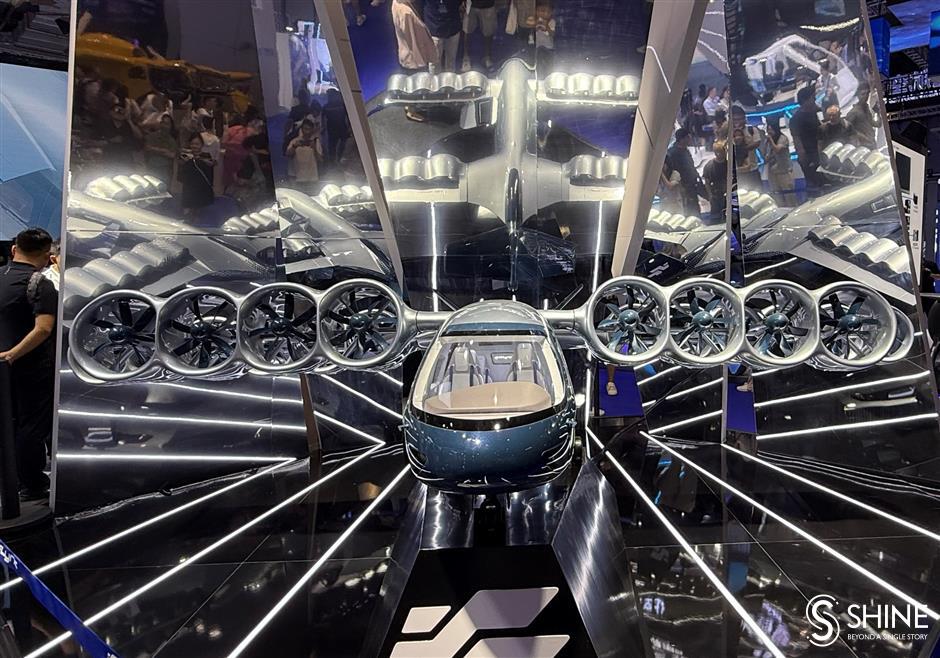
Shanghai-based Inflync's model of an unmanned aerial vehicle with ducts. Still under development and aimed at urban air mobility, the craft is expected to prevent bird collisions and reduce noise.
Anhui-based Hey Airlines displayed its EH216S vehicle, which has been licensed by the Civil Aviation Administration of China for limited operation.
EH216S, a vertical take-off and landing craft, can carry two passengers. It is operated by a digital management and control system on the ground and can fly designated routes, serving either for transport or entertainment purposes.
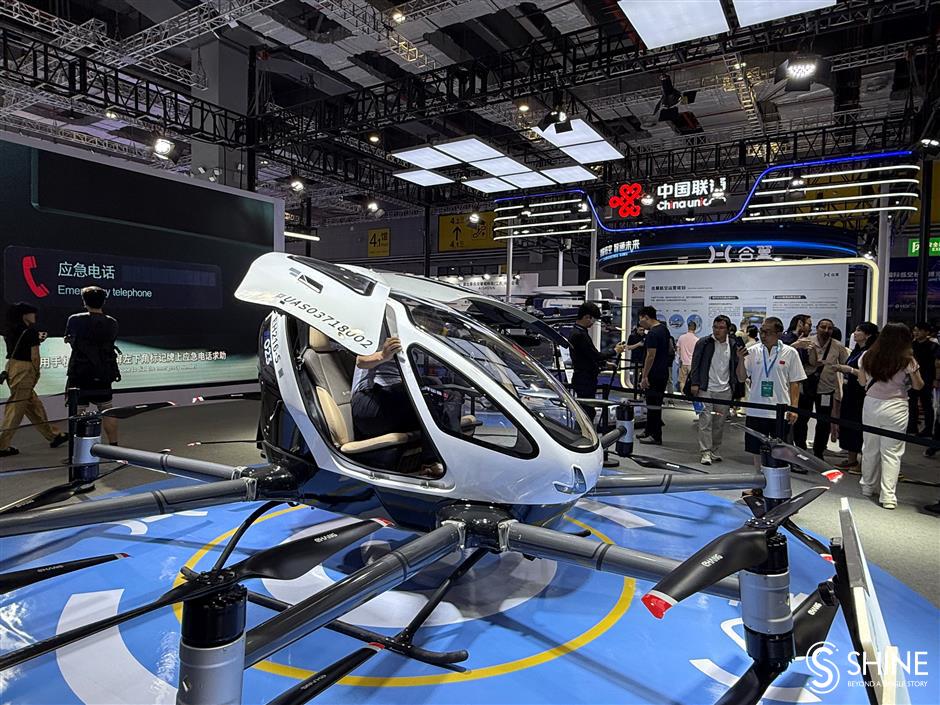
The EH216S unmanned aerial vehicle is developed by Anhui-based Hey Airlines.
"The aircraft offers a swift and efficient alternative to traditional ground transport," said Peng Sixuan, deputy general manager of Hey Airlines. "Its applications are diverse, ranging from tourism to streamlining daily commutes."
Two operational hubs are being prepared for EH216s in Hefei, capital of Anhui Province, where the company is based.
"Initially we plan to do low-altitude scenic tours for aerial views, offering a completely new perspective for sightseers," Peng told China Biz Buzz. "While in the future, we anticipate that the bases could also serve as transit hubs for connecting flights as part of an air taxi network."
A smart cabin for passenger comfort
Aerofugia, an advanced air mobility developer under automobile giant Geely, is focusing on a new smart cabin to increase passenger comfort on its AE200 unmanned aerial vehicle. The cabins will be to hold six passengers, and the craft can provide transport for distances up to 200 kilometers.
Sun Zhengxu, an Aerofugia official, said new technologies reduce noise and vibrations.
"The cabins include a dynamic center console, ergonomic 'cloud-like' seating, an onboard movie theater and an intelligent air management system, all working in concert to elevate the quality of the journey," he said.
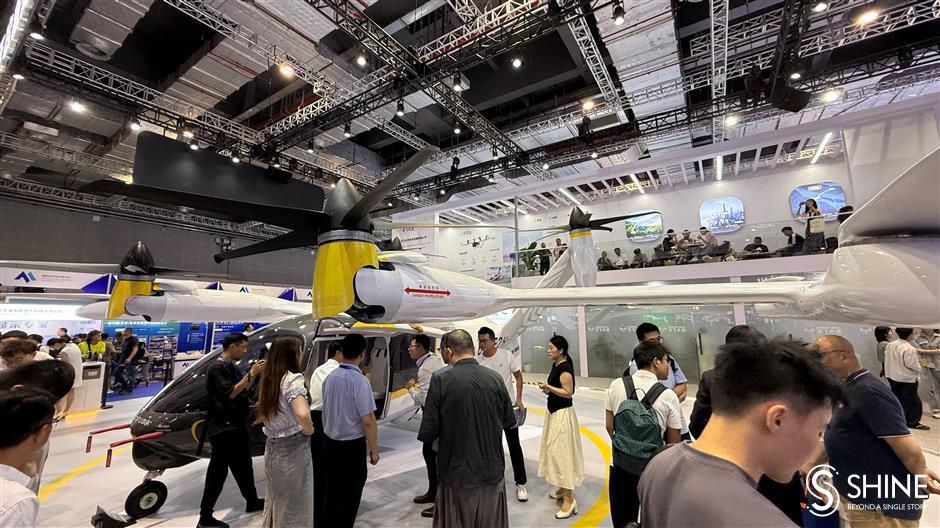
Aerofugia's AE200 craft and the optional luxury smart cabin (below)
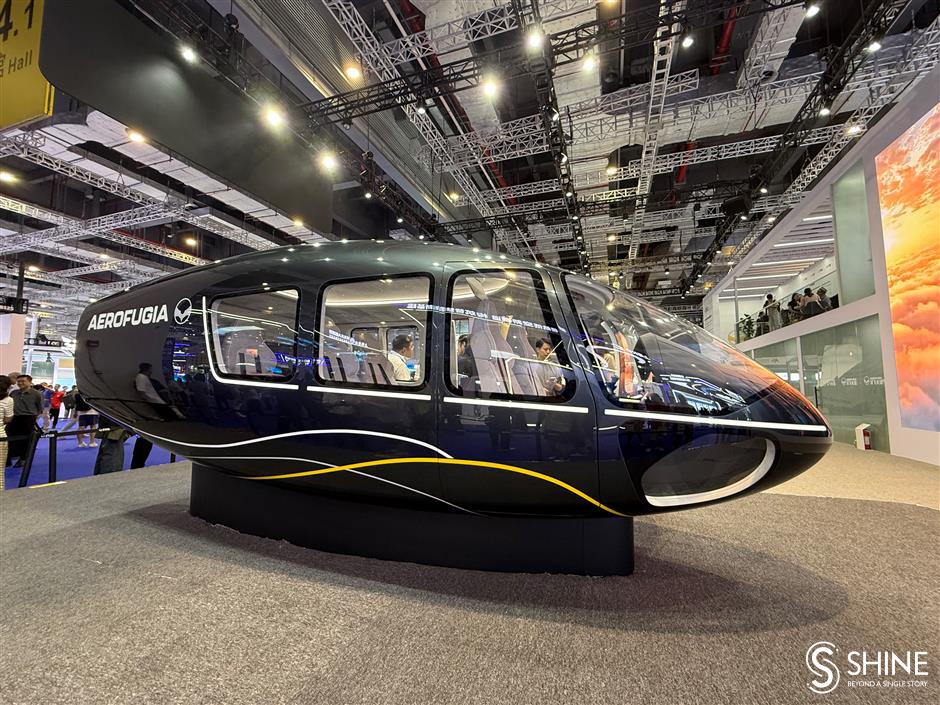
China's low-altitude economy is poised for significant expansion. The Civil Aviation Administration forecasts the domestic market will reach 3.5 trillion yuan (US$488 billion) by 2035.
That ambitious vision is underscored by government support laid out in a two-year work report issued last year.
Chinese unmanned aviation vehicles, which also include drones, have caught the world's attention. At the expo. Thai hotel giant Pan Pacific signed a letter of intent to buy 500 vertical lift-off and landing vehicles from Shanghai-based Volant Aerospace. The deal, valued at US$1.75 billion, marks the largest overseas order in the Chinese industry to date.
Earlier, UAE-based Autocraft finalized a purchase agreement with Shanghai-based TISI Technologies in a US$1 billion deal for 350 unmanned aerial vehicles.
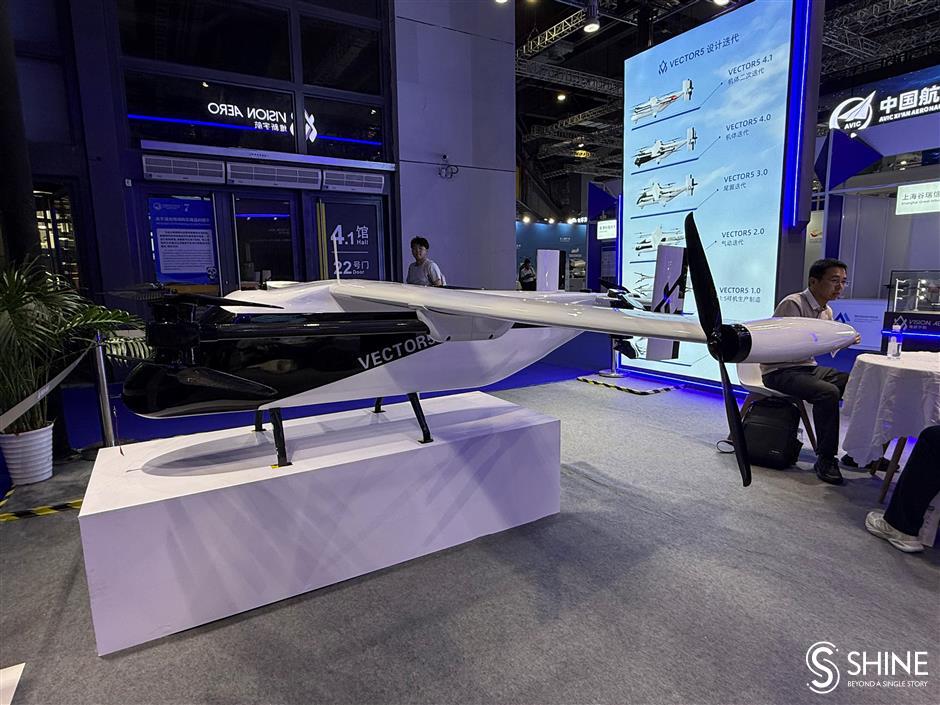
Xi'an's Vision Aero is promoting Vector 5 as an emergency rescue vehicle. It is cheaper than a standard helicopter and can carry medical equipment and a 2.3-meter stretcher.
Potential comes with challenges
The market potential may be huge, but so are the challenges.
"The low-altitude economy, in a broad sense, reflects a fundamental shift in lifestyle, aiming to make transportation three-dimensional," said Professor Chen Jun, an academic at the Chinese Academy of Engineering. "It may seem easy to get such a vehicle in the air, but scaling that into a viable economic transport that ensures safety and efficiency in a high-density, low-altitude environment is more complicated."
Chen noted that urban environments pose unique obstacles, with their dense high-rise buildings, unpredictable weather patterns and bird flocks. Low-altitude flight must always consider factors on the ground, requiring an "air-ground collaborative" approach, he said.
"We need to develop low-altitude aeronautical charts and implement 3D navigation systems," Chen pointed out. "That involves integrating low-altitude data with existing geographical data to create sophisticated 3D navigation models and maps essential for safe and regulated operations."
Many provinces and cities across China have already formulated development plans that aim to establish comprehensive low-altitude industry chains, covering upstream to downstream sectors – with some scheduled to come into effect by 2027.
Shanghai last year established Low-Altitude Economy Industrial Development Co to build four low-altitude operations networks covering infrastructure, air connectivity, air routes and services.
"We've been searching for sites in Shanghai that are currently vacant or have stopped production, like old chemical factories or unpopulated areas, that can be redeveloped into specialized test grounds," said Ma Ye, director of investment for the company.
Providing testing grounds
These new facilities will cater to a wide range of industrial testing, including outdoor scenarios and controlled environments that simulate high temperatures, high altitudes and maritime conditions.
The goal is to provide diverse and rigorous environments for developers to test low-altitude products for safety, reliability and performance.
The new company is also planning a significant infrastructure development – a north-south air corridor spanning the city. It will connect key aviation points, creating a seamless pathway for low-altitude traffic.
"This corridor will link Longhua Airport in the city center, and extend southward to an unmanned aerial vehicle base in suburban Jinshan District," Ma told China Biz Buzz. "It will create a fully integrated flight path, facilitating smoother and more efficient aerial operations across the metropolis."
Ma also noted that company will establish a municipal-level flight service platform, which will serve as the central hub for all future flight activities within Shanghai.
"Eventually, all flight activities in Shanghai will go through this platform," she said. "We hope to develop industrial standards that will eventually become national benchmarks."
The lack of established standards and detailed laws and regulations has emerged as a significant challenge to the industry.
One of the key businesses of Hangzhou-based Genekosy Intelligent Security Technology Co is to monitor and report "black flights" – unauthorized and unregulated drone activity. It has deemed current laws and regulations insufficient.
"Punitive measures for such illicit flights exist, but their deterrent effect is limited," said Zhou Ye, brand manager of Genekosy.
"Sometimes, perhaps on a whim or to seek profits, some people are willing to take the risk and engage in unauthorized activities, such as drone photography," he said. "That causes safety concerns for normal flying low-altitude craft. It's urgent that laws and regulations keep pace with the rapidly developing industry."
Source: Shanghai Daily
